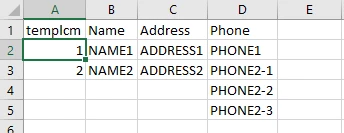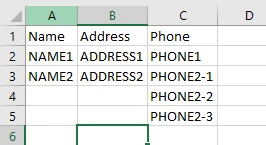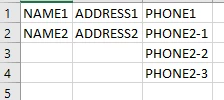Suppose you have a file like TEMP that has NAME, ADDRESS, and PHONE where NAME and ADDRESS are both single values but PHONE is multi value.
Like so:
TEMP..................... NAME...... ADDRESS... PHONE.....
1 NAME1 ADDRESS1 PHONE1
2 NAME2 ADDRESS2 PHONE2-1
PHONE2-2
PHONE2-3
If you
SELECT TEMP NAME ADDRESS
then you will get a list where each record supplies two items to the list, namely the NAME as one item and ADDRESS as another item:
001 NAME1
002 ADDRESS1
003 NAME2
004 ADDRESS2
However, if you
SELECT TEMP NAME ADDRESS PHONE
then you get at minimum 3 elements per item, but if PHONE happens to have mulitple values, no NAME or ADDRESS is supplied to go with each value.
001 NAME1
002 ADDRESS1
003 PHONE1
004 NAME2
005 ADDRESS2
006 PHONE2-1
007 PHONE2-2
008 PHONE2-3
How can I get blanks inserted for NAME and ADDRESS when PHONE has multiple values?
Can it be done?
------------------------------
Tom Marracci
General Manager
Aircraft Spruce
corona CA US
------------------------------








